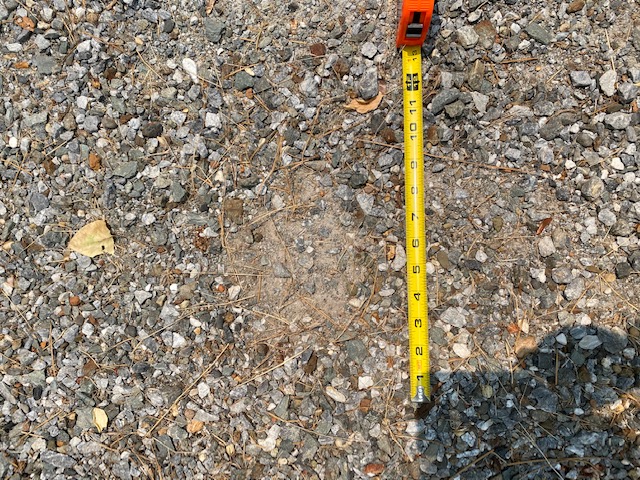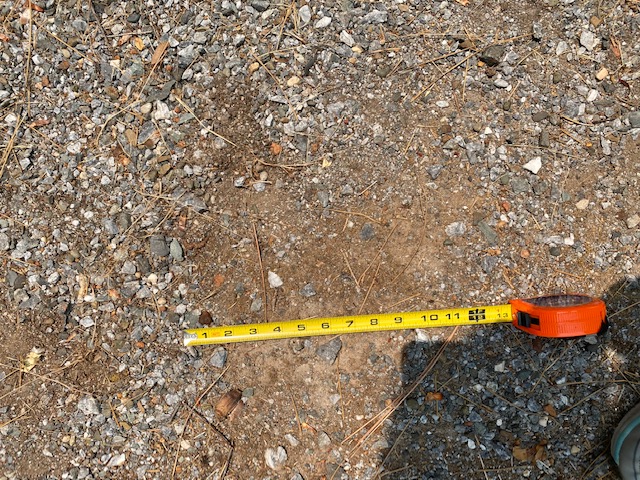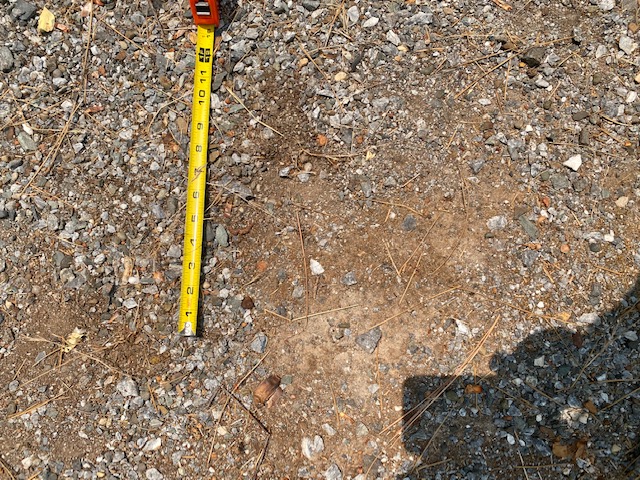This blog is the second in a series that I wanted to write to bring attention to the wonderful black bears that I am privileged to observe. Black bears often follow the game trails, deer tracks, and we have clear game trails that flow around our house. If you haven’t watched the videos in my prior blog, please consider doing so. I observe North American Black Bears regularly this time of the year, and I enjoy sharing my experiences.
I can identify a number of the bears by their markings and features and then question their behavior. For example, what caused the bear to stop and possibly sit and look around so close to our house? What frightened the bear and caused it to retreat so quickly? What did the cinnamon bear think as he investigated our scents?
After the recent bear visitations, I had to go out and look for tracks. I did not expect to find any, but I did! Finding the tracks was a total surprise. We put loose gravel back of the house just for the ease of maintenance. I’ve mentioned multiple times that Jim and I are mountain newbies, and we are still learning how to best care for the property and not disturb the wildlife. When we walk on the gravel, it just makes a crunching sound. When the deer walk through the gravel area, they leave depressions due to their hoofs. The Bears walk on the soles of their soft feet, and typically they do not leave tracks unless they walk through soft mud or snow. So I never expected to find tracks. I assume that the tracks were a result of the bear’s weight, which displaced the gravel.
Black bears have five toes on each foot. The larger toe of a black bear is on the outside of the foot, unlike our foot. The smaller toe is on the inside of the foot and not always visible in the track.
The paws of a Black Bear are thicker at the outer edge. The front paw tracks are wider than the rear paw tracks. This size difference results because the small round heel pad of the front foot is seldom visible on the track. The rear track is longer because the whole foot, including the heel, registers. Black Bears tend to toe in, especially with their front feet. They are pigeon-toed—what a sweet thought.
Unfortunately, I don’t think my photos are clear enough to show the true shape of the bear’s feet. So I searched the Internet for graphic depictions of Black Bear feet, and I thought the image on the website below was very clear. Please remember that black bears are individuals, and their paw prints will vary from any graphics.
Animal Tracks – Black Bear
Black Bears and Their Tracks
https://www.bear-tracker.com/bear.html



I expected the tracks to be larger because the bears appeared so large in the photographs.
My non-scientific study of black bears continues, and I am so pleased to share it with you!
References:
North American Bear Center
https://bear.org/bear-facts/black-bears/black-bear-sign/
California Department of Fish and Wildlife
https://wildlife.ca.gov/Conservation/Mammals/Black-Bear
Animal Tracks – Black Bear
https://www.bear-tracker.com/bear.html


What an education! Enjoy
Hi Karen, Yes, it is exciting, and I feel so privileged at the same time.